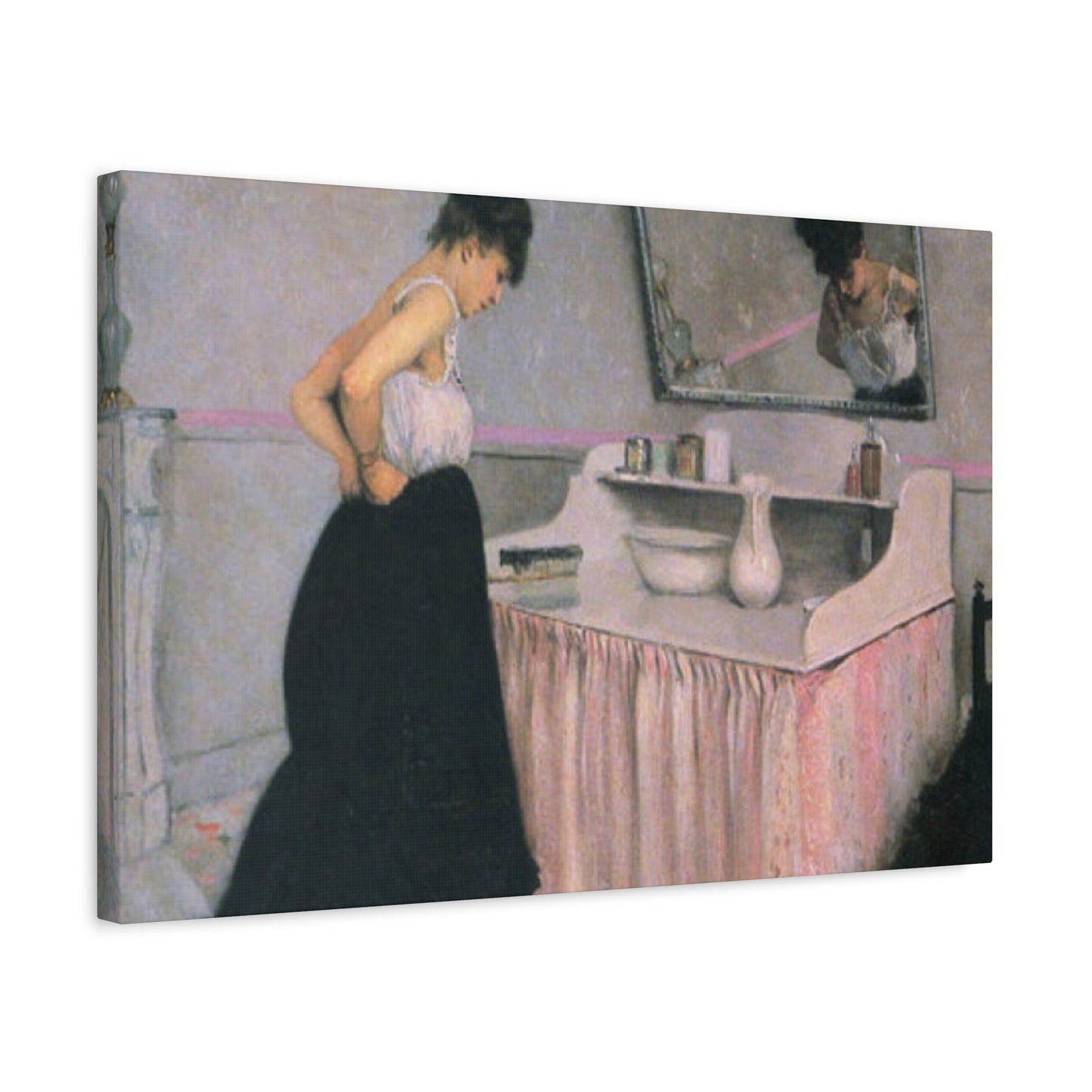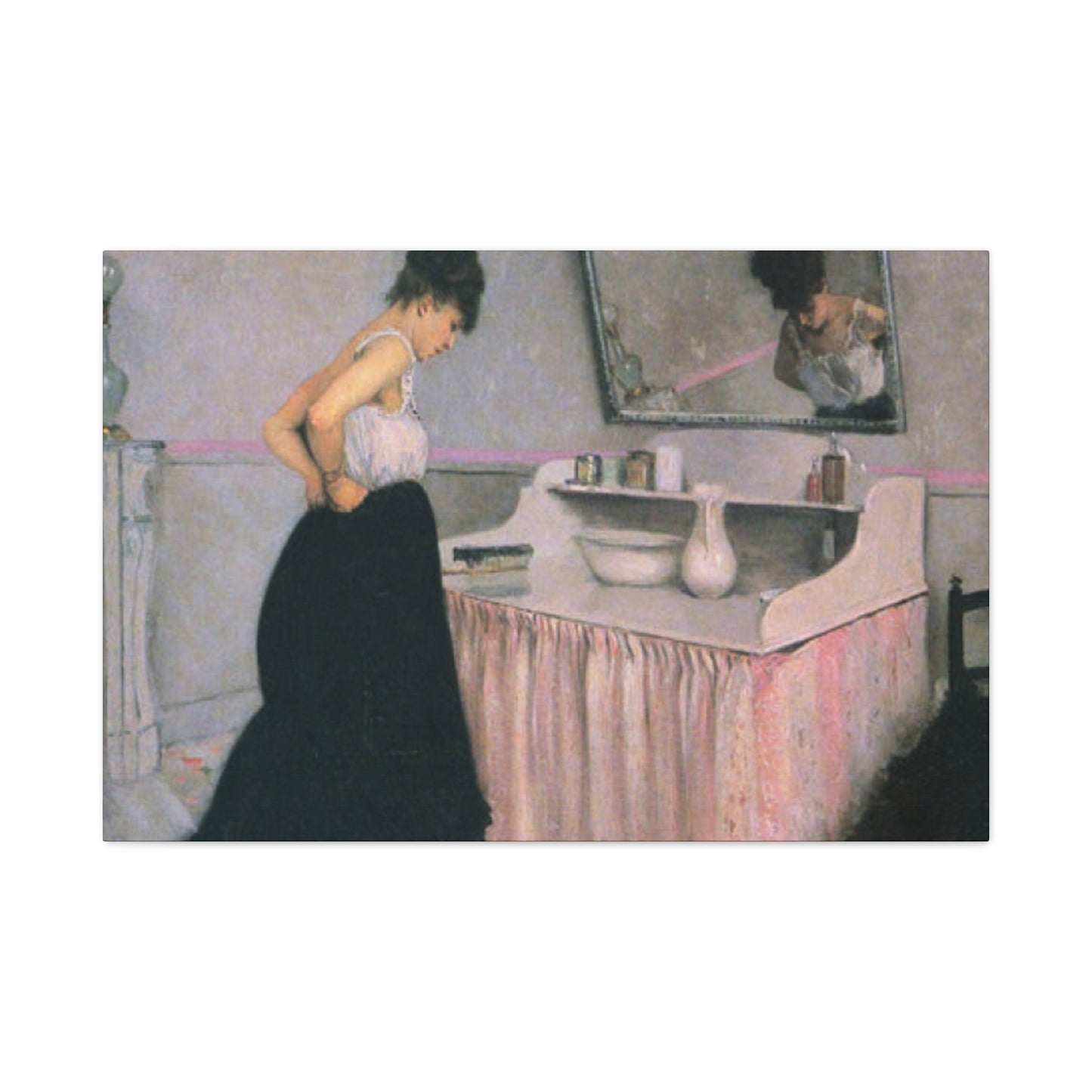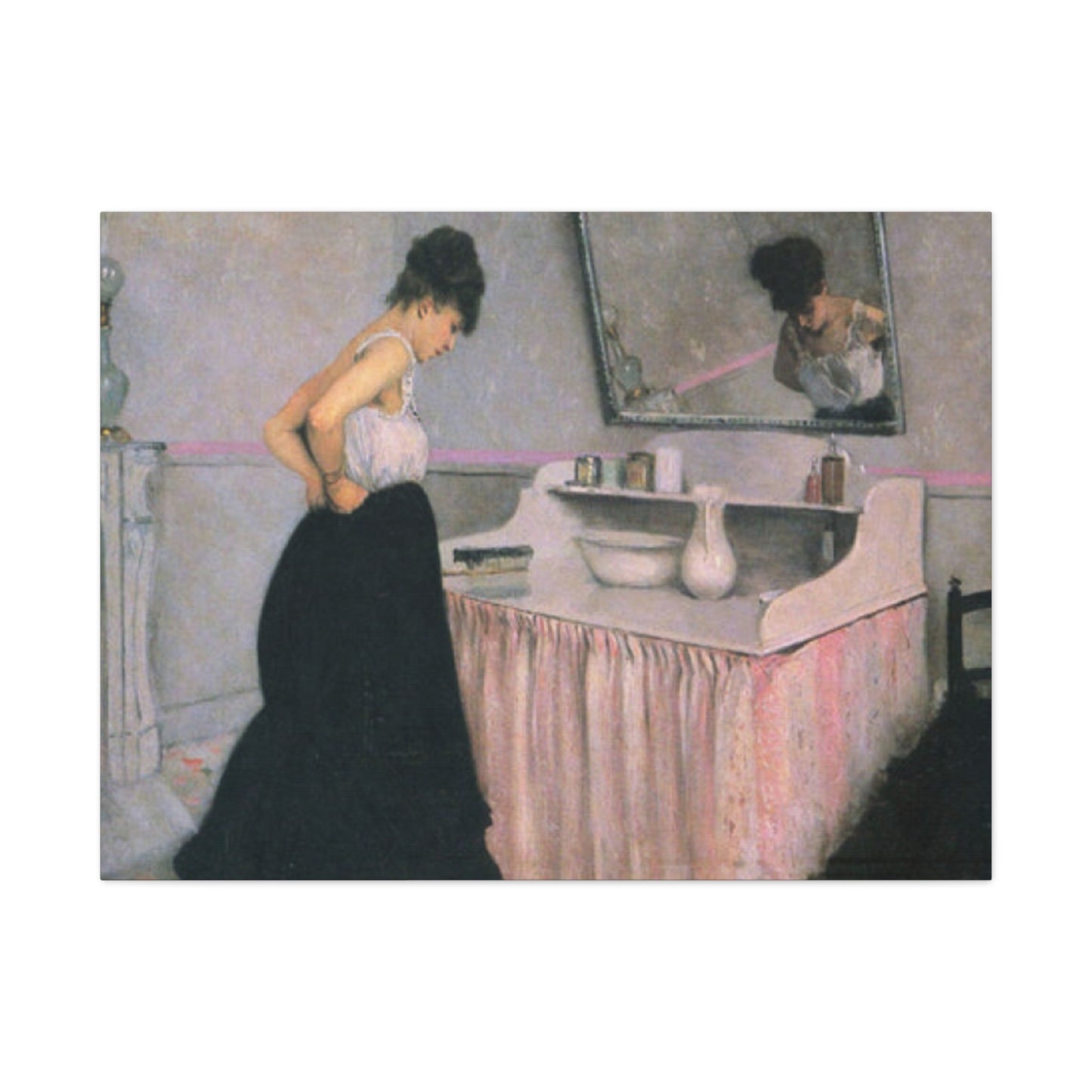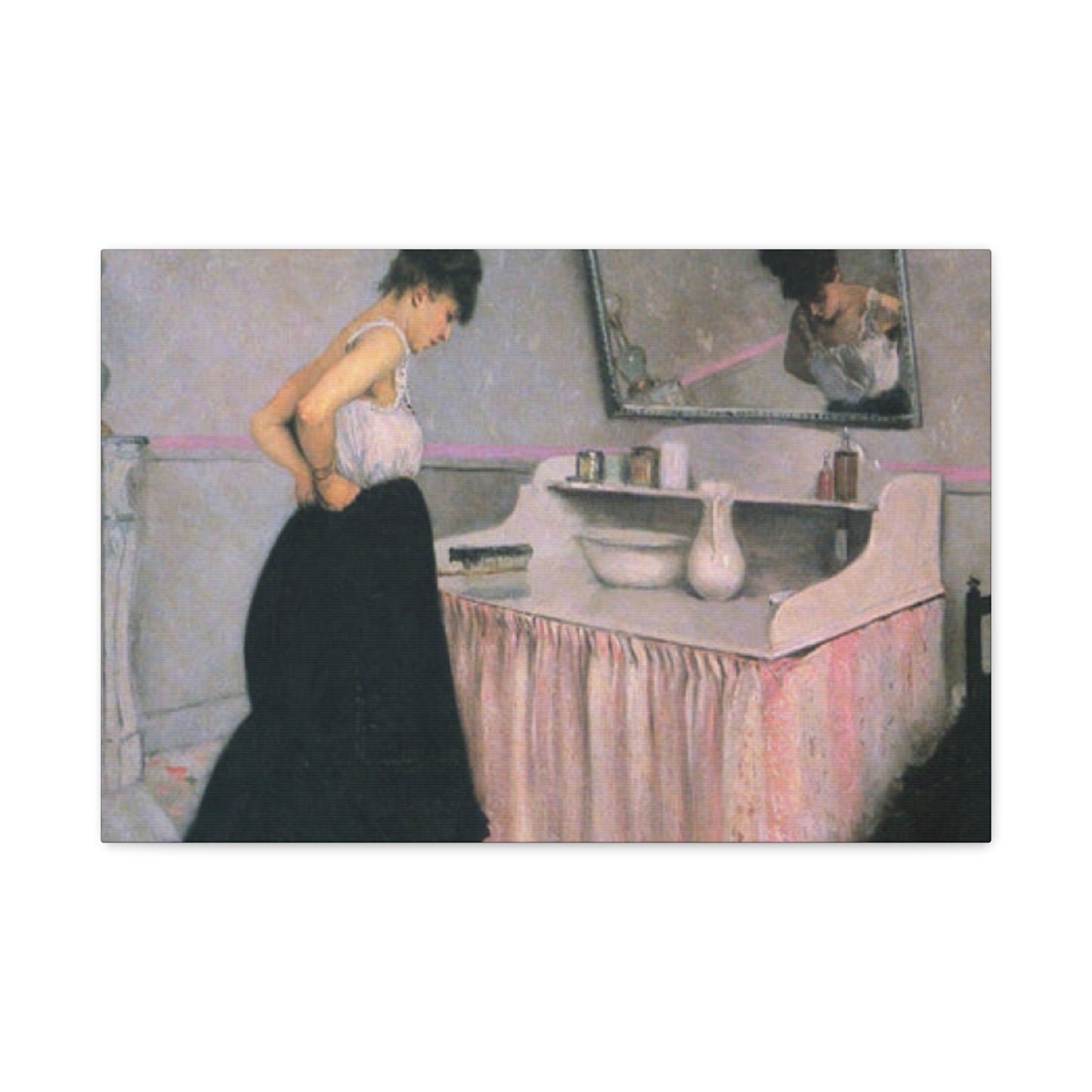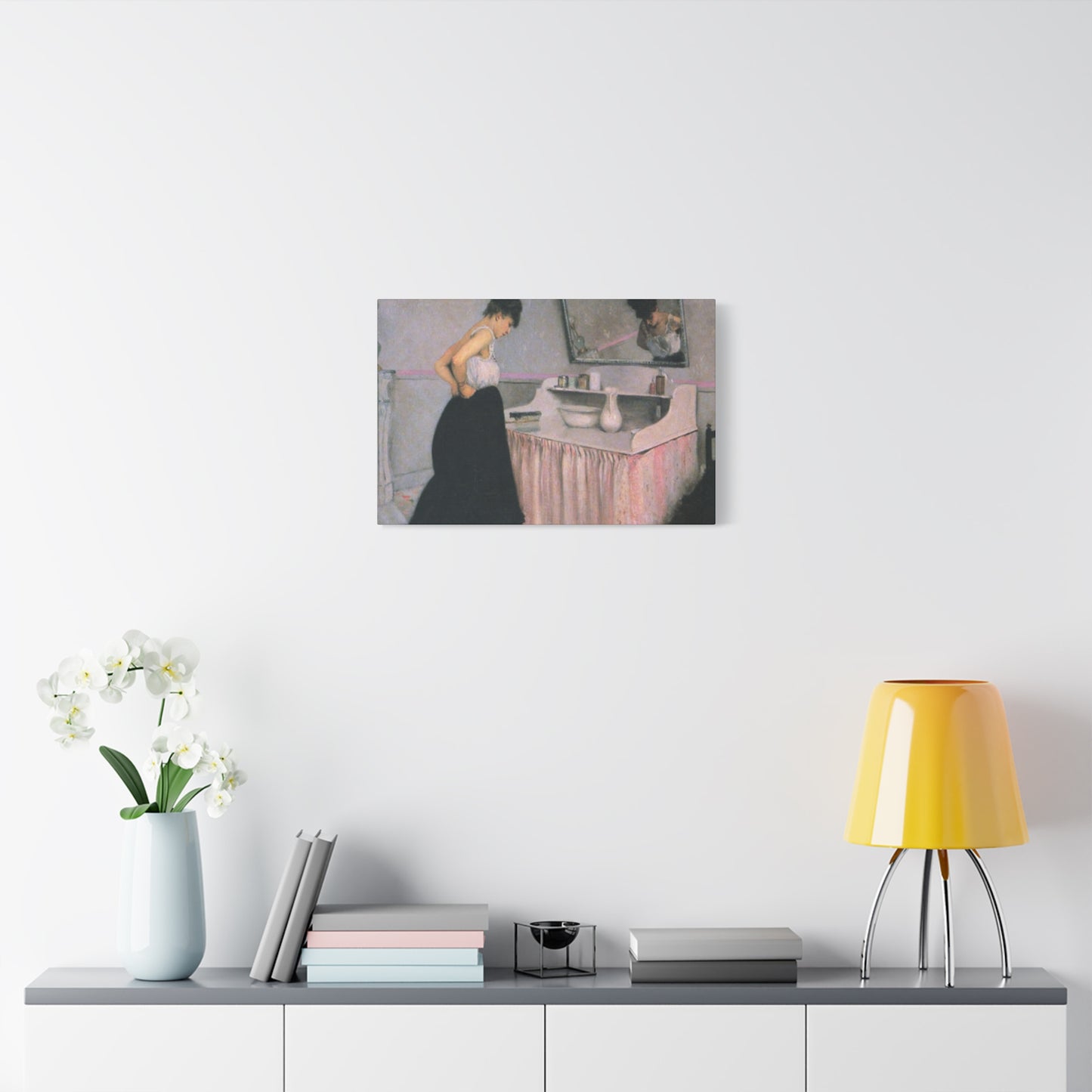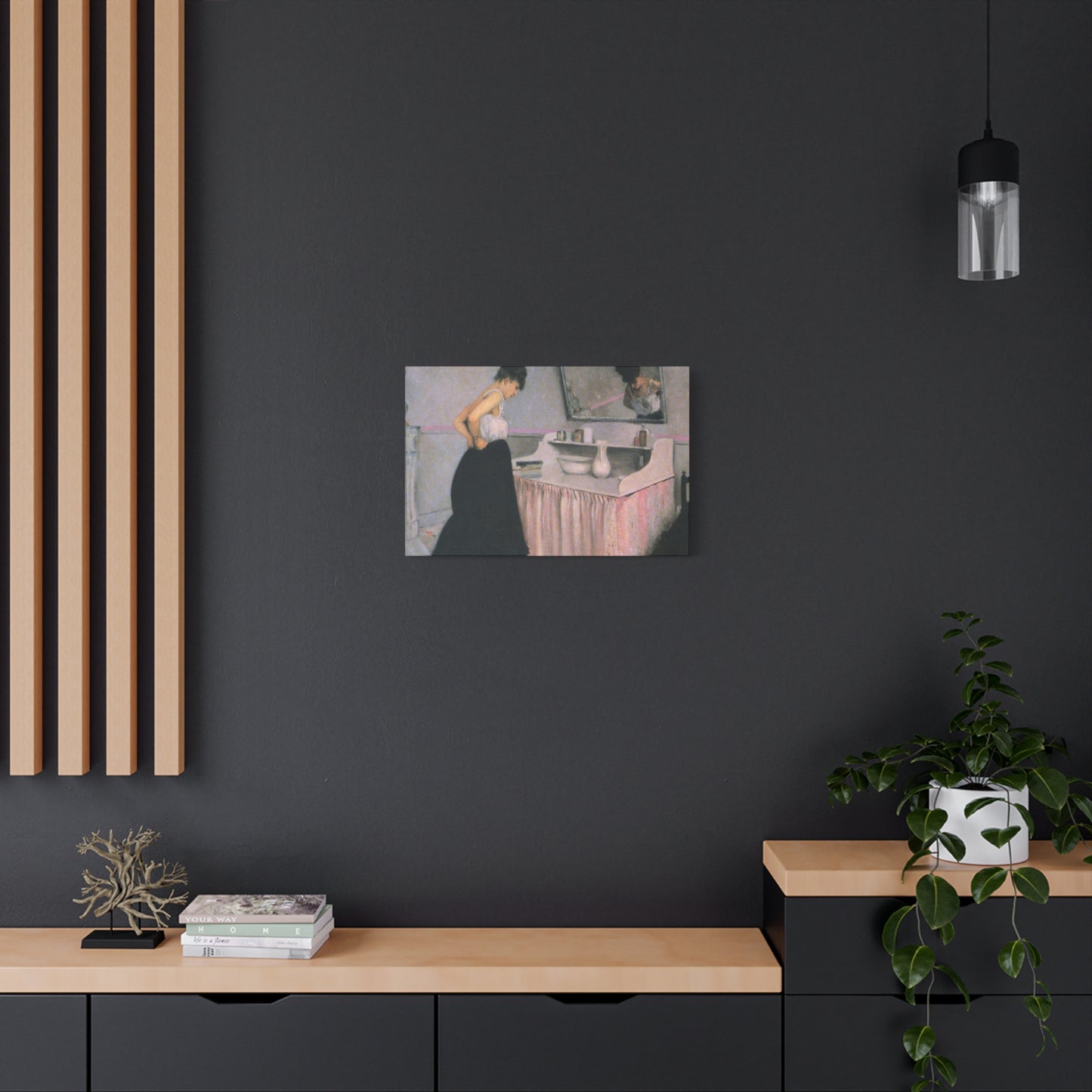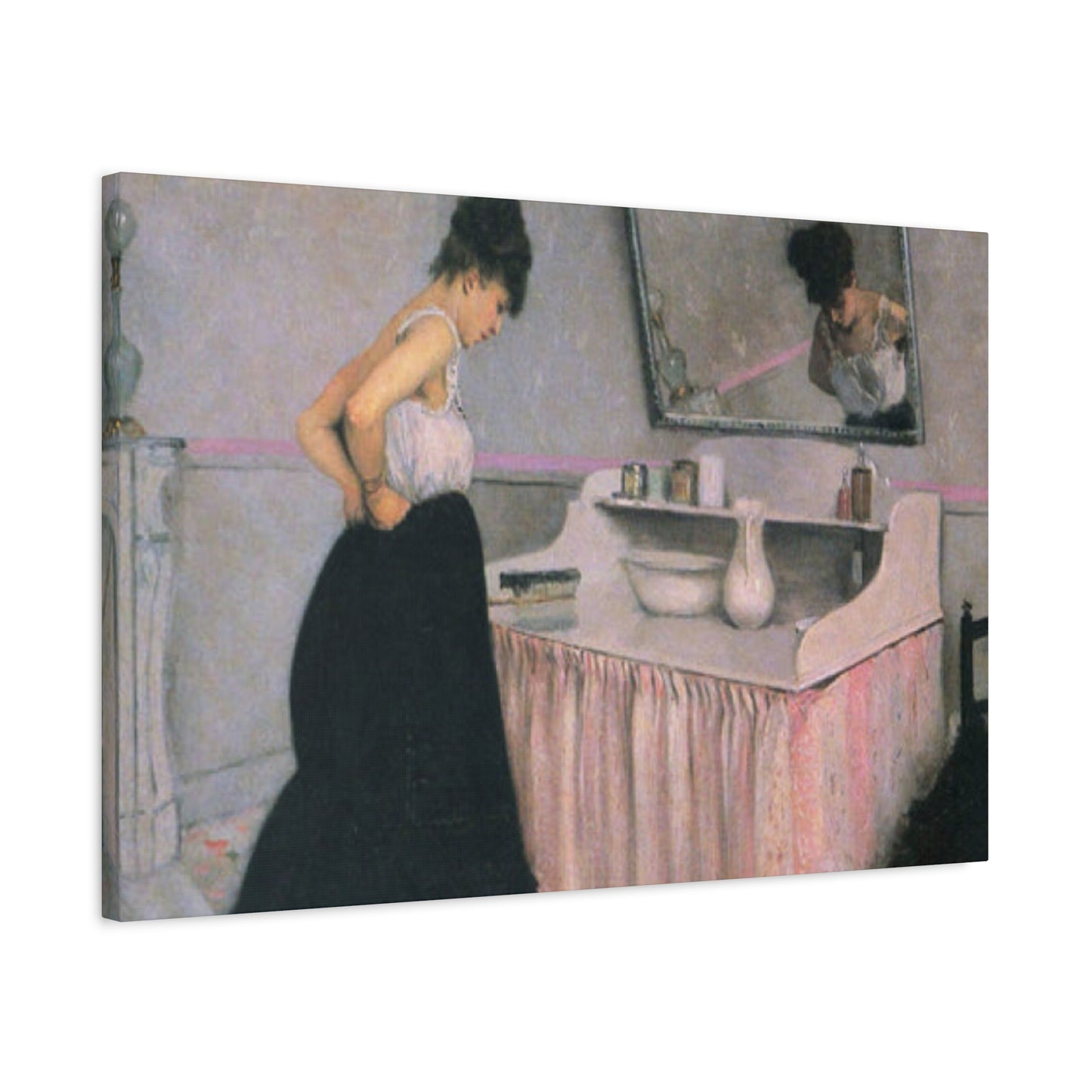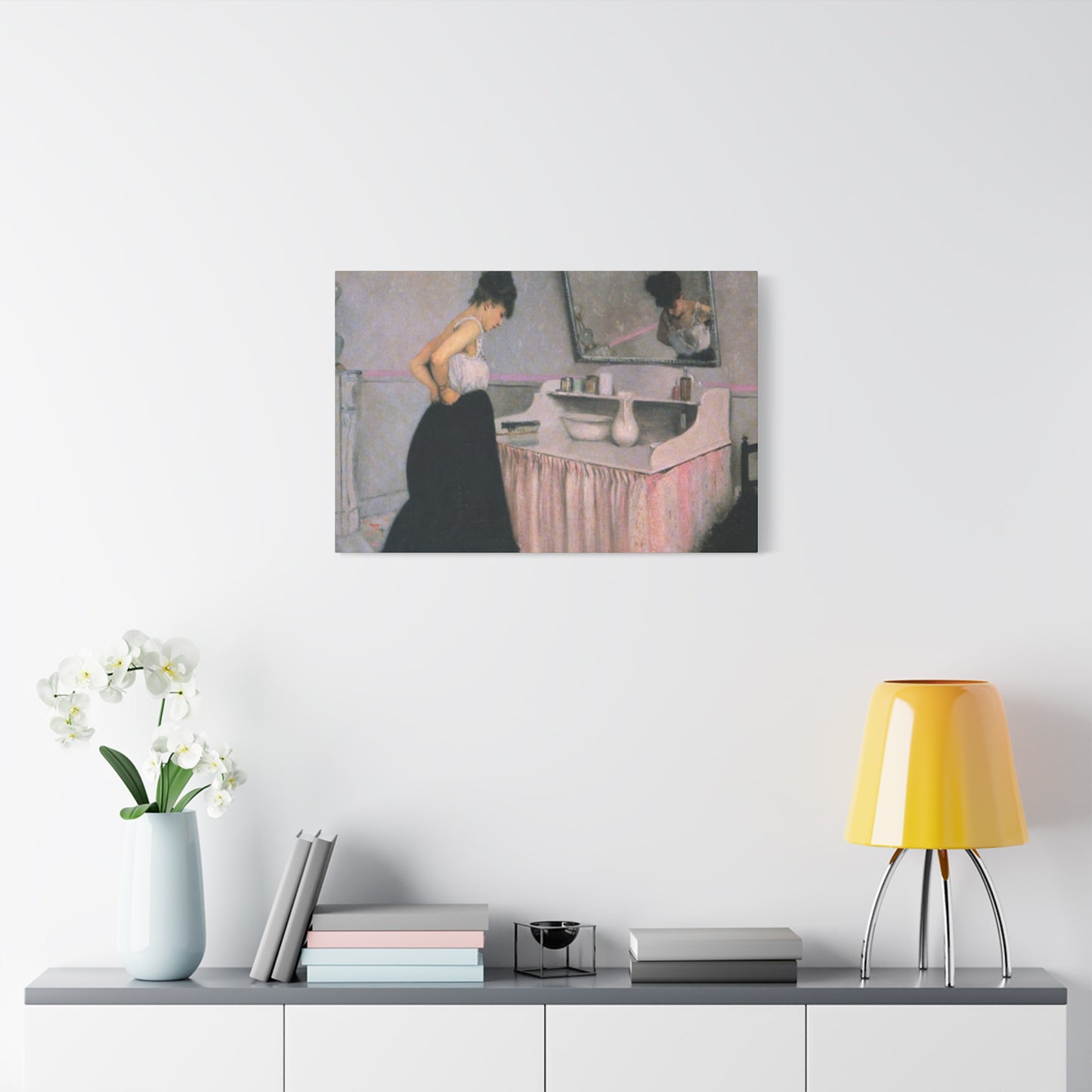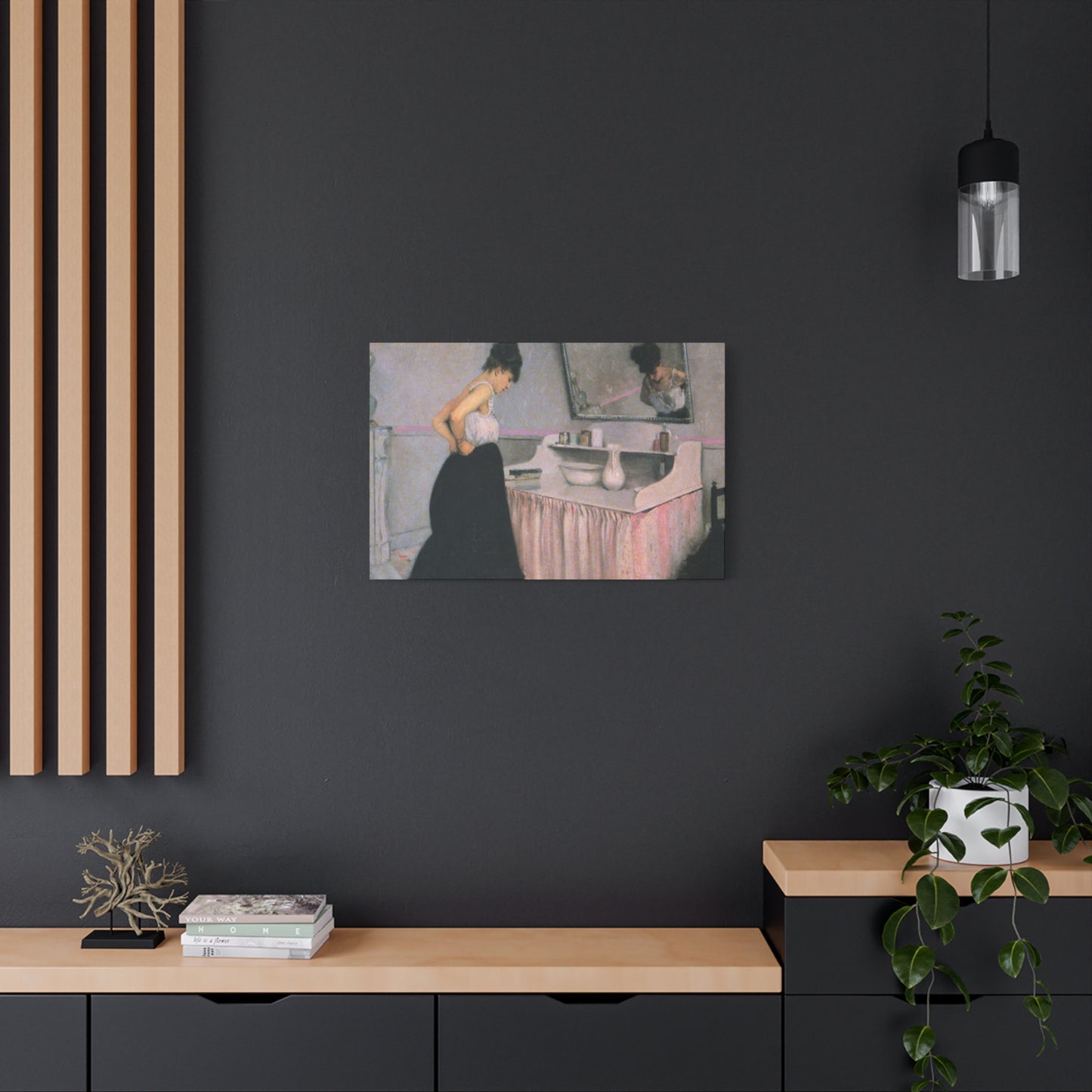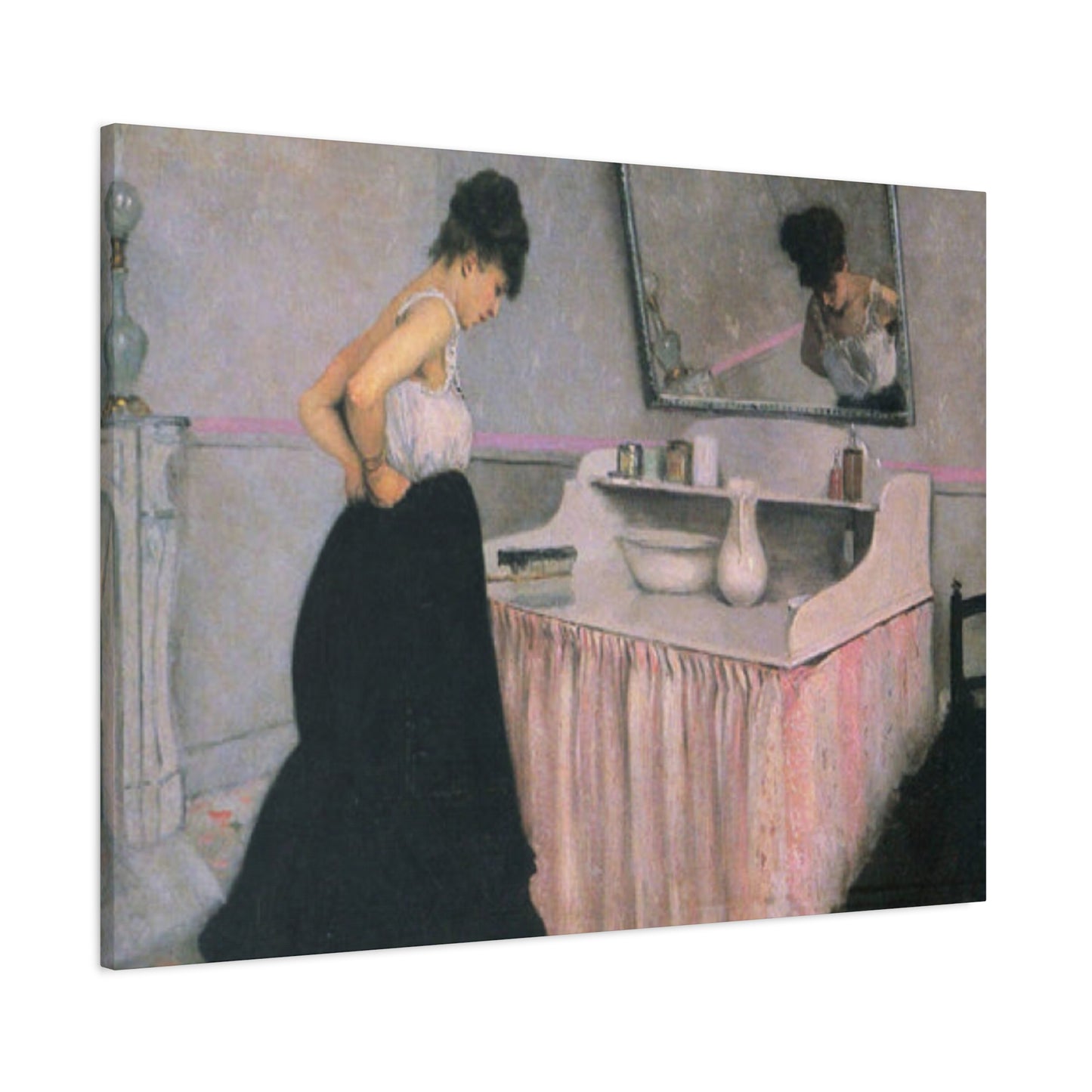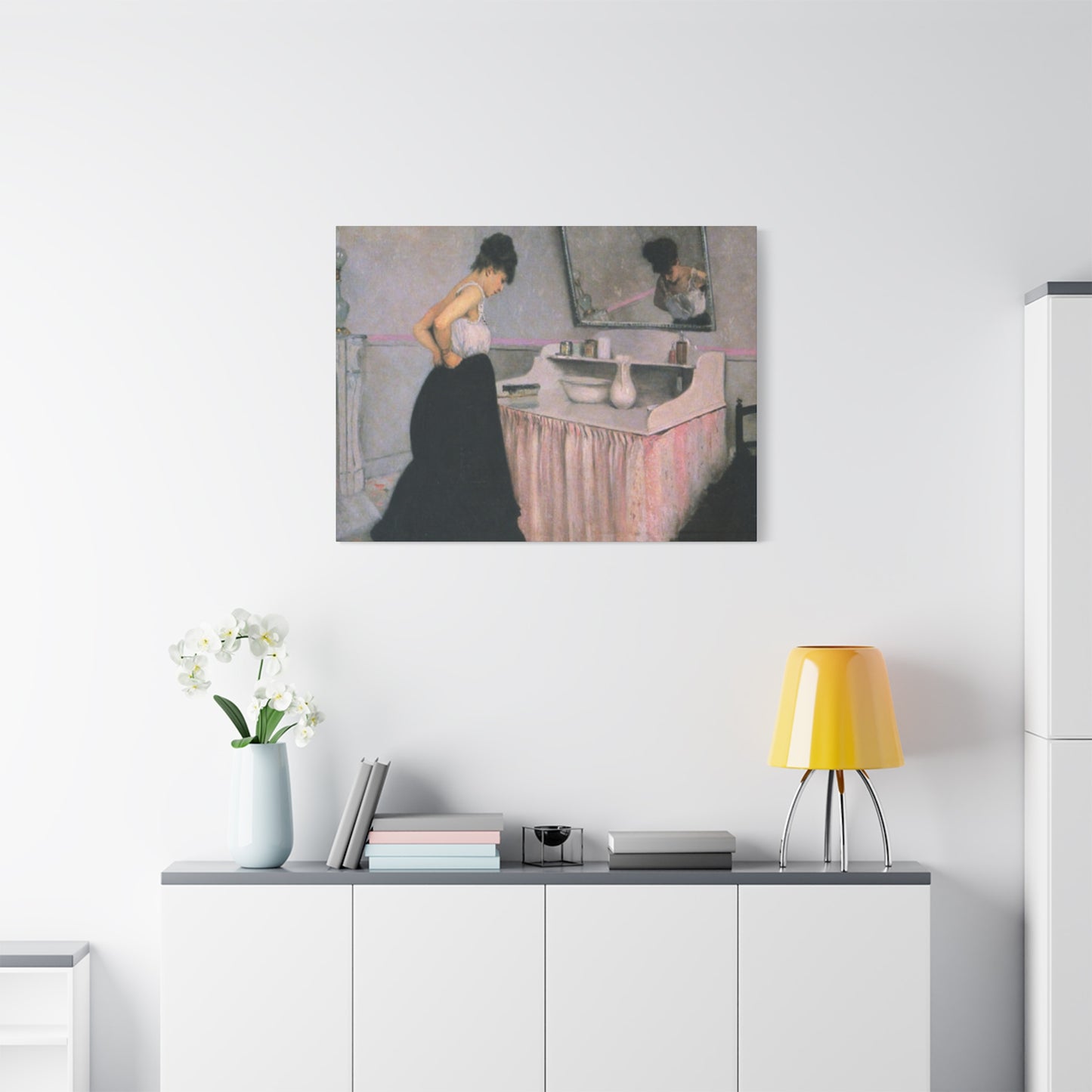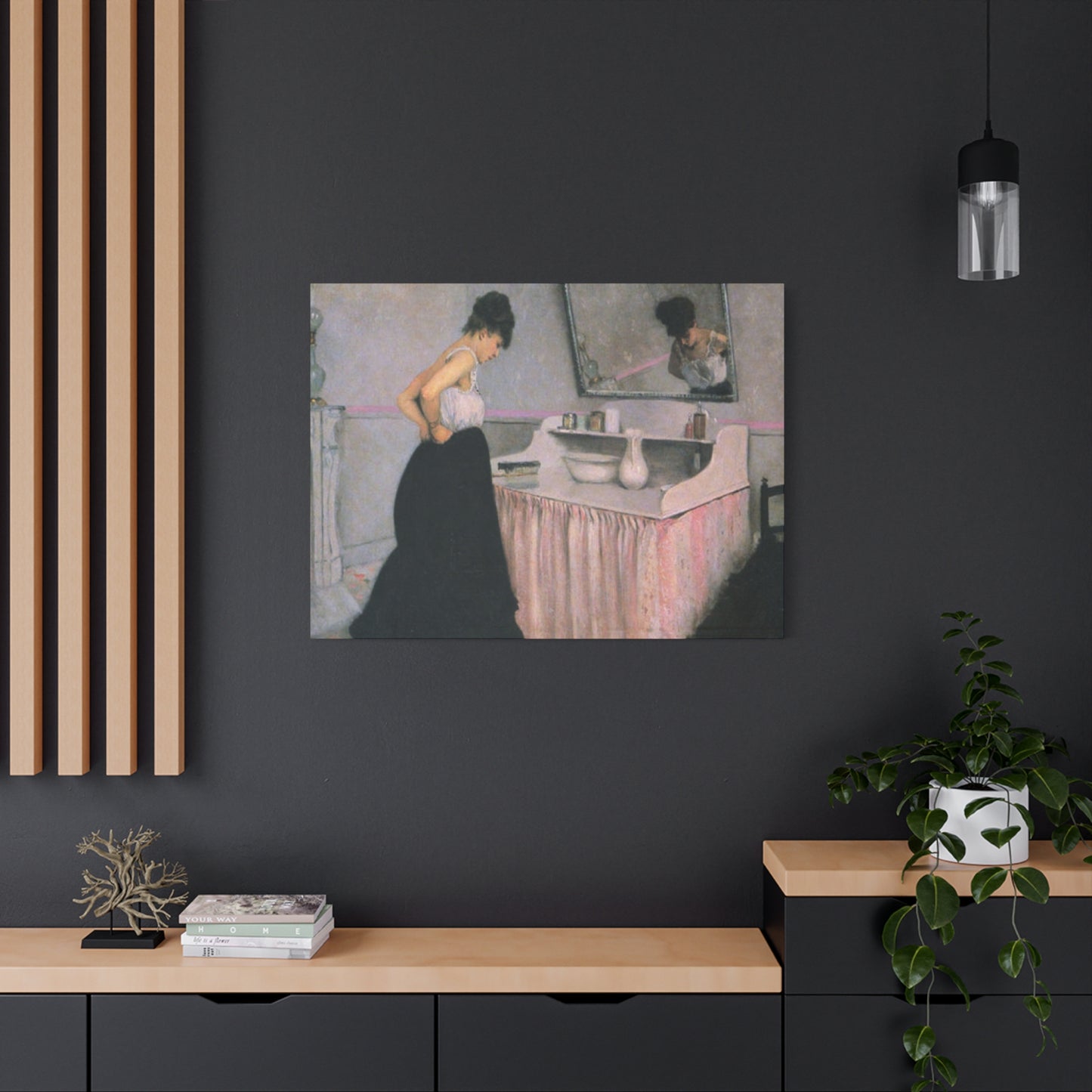Gustav Painting Wall Art: A Blend of Tradition and Modernity
Gustav's portrait wall art stands as a testament to artistic mastery, combining technical brilliance with profound emotional depth. These remarkable works showcase distinctive characteristics that have made them timeless pieces for home decoration and artistic appreciation. The intricate brushwork demonstrates Gustav's exceptional skill in capturing human essence, with each stroke carefully placed to convey not just physical likeness but the inner spirit of the subject.
The compositional elements in Gustav's portraits reveal his sophisticated understanding of visual harmony. Each piece exhibits meticulous attention to proportional relationships, creating balanced arrangements that draw viewers into intimate conversations with the subjects. The artist's ability to manipulate perspective adds dimensional quality to these works, making figures appear to emerge from the canvas with lifelike presence.
Gustav's use of layered painting techniques creates remarkable textural variety throughout his portraits. The application of paint varies from smooth, almost ethereal areas representing delicate skin tones to heavily impasted sections that add sculptural quality to clothing and accessories. This technical diversity contributes to the overall visual richness that makes these portraits captivating focal points in any room.
The psychological penetration evident in Gustav's portraits sets them apart from conventional portraiture. Each subject appears caught in a moment of genuine emotion or contemplation, suggesting deeper narratives that extend beyond the visible surface. This quality makes viewers feel as though they are witnessing authentic human moments, creating lasting emotional connections with the artwork.
Color relationships in Gustav's portraits demonstrate sophisticated understanding of chromatic theory. The artist employs both complementary and analogous color schemes to create visual interest while maintaining overall harmony. These carefully orchestrated color relationships contribute to the atmospheric qualities that make each portrait feel alive and present.
The scale and proportion of Gustav's portraits make them versatile additions to various living environments. Whether displayed as commanding centerpieces in formal settings or as intimate focal points in cozy rooms, these works adapt beautifully to different architectural contexts while maintaining their inherent dignity and presence.
How Gustav Captures Personality in Portraits
Gustav's extraordinary ability to capture personality in his portraits stems from his profound understanding of human psychology and his masterful technical execution. The artist approaches each subject with intense observation, studying not only physical features but also subtle expressions, gestures, and postures that reveal character traits. This comprehensive approach allows Gustav to create portraits that function as psychological studies, revealing the essence of each individual through carefully observed details.
The positioning of subjects within Gustav's portraits reflects his sensitivity to personality traits. Confident individuals often appear with direct gazes and upright postures, while more introspective subjects might be portrayed in contemplative poses with averted eyes. These compositional choices work in harmony with facial expressions to create cohesive character studies that feel authentic and revealing.
Gustav's treatment of hands in his portraits deserves particular attention, as these elements often serve as secondary focal points that reinforce personality characteristics. The positioning, gesture, and rendering of hands provide additional layers of meaning, whether suggesting creativity, authority, gentleness, or strength. The artist's ability to imbue these details with psychological significance demonstrates his sophisticated approach to character revelation.
The artist's use of environmental elements and props further enhances personality portrayal in his works. Books, musical instruments, flowers, or other objects appearing in portraits often relate directly to the subject's interests, profession, or character traits. These carefully selected elements provide viewers with additional context for understanding the individuals portrayed, creating more complete and engaging character studies.
Gustav's handling of clothing and accessories reveals another dimension of his personality-capturing technique. The way fabric drapes, the choice of colors and textures, and the inclusion of jewelry or other personal items all contribute to the overall character portrayal. These elements help establish social status, personal taste, and cultural background while maintaining focus on the subject's essential humanity.
The temporal quality in Gustav's portraits suggests moments of genuine emotion or thought, rather than static poses. This approach to capturing personality involves showing subjects in states of natural expression, whether caught in moments of joy, contemplation, melancholy, or determination. The result creates portraits that feel like glimpses into real lives rather than formal presentations.
The Most Famous Gustav Portraits for Wall Art
Among Gustav's extensive body of work, several portraits have achieved iconic status and become highly sought-after pieces for wall art collections. These masterpieces demonstrate the full range of the artist's capabilities while showcasing different approaches to portrait composition and character study. Each famous portrait tells a unique story and offers distinctive aesthetic qualities that make them valuable additions to home environments.
The portrait of the elegant woman in golden attire represents one of Gustav's most celebrated achievements in portraiture. This work demonstrates the artist's mastery of luxurious textures and his ability to create atmospheric depth through careful manipulation of light and color. The subject's enigmatic expression and regal bearing make this portrait a commanding presence that elevates any room it graces.
Gustav's portrait of the young musician showcases his skill in capturing creative spirits and artistic temperaments. The positioning of the subject with their instrument, combined with the dreamy expression and soft lighting, creates an atmosphere of artistic inspiration. This portrait appeals particularly to music lovers and those who appreciate the intersection of different artistic disciplines.
The double portrait featuring the aristocratic couple demonstrates Gustav's ability to handle complex compositions involving multiple figures. The interaction between the subjects, their positioning relative to each other, and the way their personalities complement and contrast create a dynamic study of human relationships. This work offers viewers insight into social dynamics and emotional connections between individuals.
Gustav's self-portrait stands as a fascinating study in artistic introspection and professional identity. The way the artist presents himself, the tools of his trade visible in the composition, and the direct yet thoughtful gaze create a compelling statement about artistic purpose and creative dedication. This portrait appeals to fellow artists and art enthusiasts who appreciate the meta-artistic commentary it provides.
The portrait of the merchant's daughter represents Gustav's ability to capture youthful beauty and innocence while hinting at the subject's future potential. The delicate rendering of young features, combined with sophisticated compositional choices, creates a work that balances sweetness with depth. This portrait demonstrates how Gustav could adapt his style to suit different ages and temperaments.
The formal portrait of the military officer showcases Gustav's skill in portraying authority and masculine strength. The crisp rendering of uniform details, the confident posture, and the direct gaze create a powerful presence that commands attention. This work appeals to those who appreciate historical subjects and formal portraiture traditions.
Using Gustav Portraits to Add Character to Your Home
Incorporating Gustav portraits into home environments requires thoughtful consideration of both aesthetic and psychological factors. These powerful works of art possess the unique ability to transform ordinary rooms into sophisticated, culturally rich environments that reflect the owner's appreciation for artistic excellence and human depth. The process of selecting and positioning Gustav portraits involves understanding how these works interact with existing décor elements and architectural features.
The dining room presents an ideal setting for Gustav portraits, as these works encourage conversation and contemplation during meals. A well-chosen portrait can serve as a discussion catalyst, prompting guests to engage with both the artwork and each other. The intimate scale of most dining rooms allows viewers to appreciate the subtle details and emotional nuances that make Gustav's work so compelling.
Living rooms benefit from Gustav portraits that complement the social function of these gathering areas. Portraits featuring engaging expressions or interesting character studies can enhance the welcoming atmosphere while providing sophisticated focal points. The positioning of seating relative to the portraits allows different viewing angles and distances, creating varied experiences for different occupants and guests.
Bedroom environments can accommodate Gustav portraits that create more intimate, personal atmospheres. Portraits featuring contemplative or peaceful expressions contribute to the restful quality desired in sleeping areas. The private nature of bedrooms allows for more personal connections with the artwork, making these environments ideal for portraits that hold special meaning for the owner.
Home offices and studies provide excellent contexts for Gustav portraits that suggest intellectual engagement or professional accomplishment. Portraits of scholars, writers, or other learned individuals can inspire productivity while adding cultural sophistication to work environments. The contemplative quality of many Gustav portraits complements the reflective atmosphere needed for serious work.
Hallways and transitional areas offer opportunities to display Gustav portraits in ways that create surprise and delight for inhabitants and visitors. These works can transform utilitarian passages into gallery-like experiences, demonstrating the owner's commitment to surrounding themselves with quality art throughout their home environment.
The entrance hall or foyer presents a unique opportunity to make strong first impressions with Gustav portraits. A carefully selected portrait can establish the cultural tone for the entire home while welcoming visitors with sophisticated artistic presence. The positioning and lighting of portraits in these areas require particular attention to create maximum impact.
The Role of Light and Shadow in Gustav's Portraits
Gustav's masterful manipulation of light and shadow represents one of the most distinctive and powerful aspects of his portraiture technique. This sophisticated understanding of chiaroscuro creates dramatic effects that enhance both the physical presence and psychological depth of his subjects. The artist's ability to control lighting effects demonstrates technical mastery while serving the greater purpose of character revelation and emotional expression.
The directional quality of light in Gustav's portraits often suggests specific moods and atmospheres. Soft, diffused lighting creates gentle, contemplative moods suitable for intimate character studies, while more dramatic directional lighting can emphasize strength, determination, or inner conflict. The artist's careful control of light sources allows him to guide viewer attention and create focal hierarchies within each composition.
Gustav's treatment of shadows serves multiple compositional and expressive functions within his portraits. Deep shadows can create mystery and psychological complexity, while subtle shadow gradations model form and create dimensional convincing representations of human features. The interplay between illuminated and shadowed areas creates visual rhythm and movement that keeps viewers engaged with the artwork.
The reflected light effects in Gustav's portraits demonstrate his sophisticated understanding of how light behaves in real environments. Secondary illumination from reflected surfaces adds subtle color variations and prevents shadows from becoming flat or lifeless. These technical considerations contribute to the overall believability and visual richness that characterizes Gustav's finest work.
Rim lighting effects appear frequently in Gustav's portraits, creating elegant separation between subjects and backgrounds while adding luminous quality to hair, clothing, and skin. These subtle but important lighting effects contribute to the three-dimensional quality that makes figures appear to emerge from their pictorial settings with convincing presence.
The color temperature variations in Gustav's lighting create additional layers of visual interest and atmospheric depth. Warm light sources suggest intimacy and comfort, while cooler illumination can create more formal or melancholic moods. The artist's sensitivity to these subtle color relationships enhances the overall emotional impact of his portraits.
Gustav's use of cast shadows as compositional elements demonstrates his ability to incorporate all aspects of the visual field into cohesive artistic statements. Shadows can echo facial features, suggest additional forms, or create abstract patterns that complement the figurative elements. This comprehensive approach to light and shadow integration sets Gustav's work apart from more conventional portrait approaches.
How to Choose the Right Gustav Portrait for Your Home
Selecting the appropriate Gustav portrait for your home environment involves careful consideration of multiple factors, including aesthetic preferences, room characteristics, existing décor elements, and personal connections with the artwork. The process requires balancing objective design principles with subjective emotional responses to create harmonious and meaningful additions to your living environment.
Room size and proportions play crucial roles in determining which Gustav portraits will work effectively in specific environments. Larger portraits can serve as commanding focal points in spacious rooms with high ceilings, while smaller, more intimate works might better suit cozy areas or rooms with limited wall areas. The relationship between artwork size and room proportions affects both visual balance and psychological impact.
Color relationships between Gustav portraits and existing room elements require thoughtful analysis to achieve harmonious results. Portraits featuring warm color palettes can complement rooms with similar chromatic themes, while works with cooler tonalities might provide effective contrast in warmer environments. The goal involves creating color relationships that enhance both the artwork and the surrounding décor without creating visual conflict.
The lighting conditions in potential display locations significantly affect how Gustav portraits will appear and function within your home. Natural light sources, artificial illumination, and the direction and quality of available light all influence color appearance, contrast levels, and overall visibility of artistic details. Proper lighting consideration ensures that chosen portraits can be appreciated fully in their intended locations.
Personal emotional responses to different Gustav portraits should guide selection decisions alongside objective design considerations. Portraits that evoke positive emotional reactions, suggest meaningful associations, or simply appeal to individual taste preferences will provide lasting satisfaction and enjoyment. The subjective dimension of art appreciation makes personal connection an essential element in the selection process.
The architectural style and historical period of your home can influence which Gustav portraits will integrate most successfully with the existing environment. Traditional homes might accommodate formal, classical portraits more easily, while contemporary settings might benefit from Gustav's more experimental or unconventional works. Understanding these stylistic relationships helps create cohesive overall aesthetics.
Consider the intended function of the room when selecting Gustav portraits, as different environments serve different purposes and create different psychological atmospheres. Social areas might benefit from portraits that encourage conversation, while private retreats might call for more contemplative or personally meaningful works. Matching artwork to intended room functions enhances both aesthetic and practical success.
The History of Portrait Painting in Gustav's Work
Gustav's approach to portrait painting reflects both his individual artistic vision and his position within the broader historical tradition of portraiture. Understanding this historical context illuminates how the artist both honored established conventions and pushed boundaries to create distinctive contributions to the portrait genre. His work demonstrates evolution from traditional approaches toward more personal and psychologically penetrating interpretations of human subjects.
The classical foundations in Gustav's portrait technique reveal his thorough training in traditional methods and his respect for historical masters. Elements such as careful drawing, sophisticated color relationships, and attention to anatomical accuracy show his grounding in academic principles. However, Gustav consistently builds upon these foundations rather than merely repeating established formulas.
Gustav's incorporation of contemporary influences reflects his engagement with the artistic developments of his era. Elements drawn from emerging movements and techniques demonstrate his willingness to experiment while maintaining the essential dignity and purpose of portrait painting. This balance between tradition and innovation characterizes much of his most successful work.
The psychological depth that distinguishes Gustav's portraits represents a significant development beyond purely descriptive approaches to the genre. Rather than simply recording physical appearance, Gustav seeks to reveal character, emotion, and inner life through careful observation and artistic interpretation. This approach places him among the most perceptive portrait painters in the tradition.
Gustav's technical innovations contribute to his distinctive position in portrait painting history. His experimental approaches to paint application, color mixing, and compositional arrangement demonstrate creative problem-solving and artistic growth. These technical developments serve expressive purposes rather than existing merely as displays of skill.
The social context of Gustav's portrait commissions reveals important aspects of his historical period and artistic environment. The subjects he portrays, the settings he chooses, and the social relationships implied in his work provide insights into the cultural values and expectations of his time. This sociological dimension adds historical significance to the artistic achievements.
Gustav's influence on subsequent portrait painters demonstrates the lasting impact of his innovations and approaches. Elements of his technique, compositional strategies, and psychological insight appear in the work of later artists, confirming his important position in the continuing development of portrait painting as an artistic discipline.
The Impact of Gustav's Portraits on Modern Wall Art
Gustav's portraits continue to influence contemporary approaches to wall art, demonstrating the enduring relevance of his artistic vision and technical mastery. Modern artists, designers, and collectors recognize the sophisticated balance of technical skill and emotional depth that characterizes his work, leading to continued appreciation and emulation of his methods in current artistic practice.
Contemporary portrait painters often study Gustav's works to understand effective approaches to psychological portraiture and character representation. His methods of capturing personality through subtle details, expression, and compositional choices provide valuable lessons for artists working in traditional media. The influence extends beyond direct copying to encompass broader philosophical approaches to human representation.
Interior designers frequently reference Gustav's portraits when creating sophisticated residential and commercial environments. The timeless quality of his work allows these pieces to function effectively in contemporary settings while adding historical depth and cultural sophistication. Modern design professionals appreciate how Gustav's portraits can anchor and elevate interior schemes.
The printmaking and reproduction industry has embraced Gustav's portraits, making high-quality copies available to broader audiences who appreciate fine portraiture but cannot acquire original works. These reproductions allow Gustav's influence to extend far beyond traditional art collecting circles, bringing his aesthetic vision into homes and offices worldwide.
Digital art applications sometimes incorporate elements inspired by Gustav's portrait techniques, adapting traditional approaches to contemporary media. Artists working in digital formats study his color relationships, lighting effects, and compositional strategies to inform their own creative processes. This cross-media influence demonstrates the fundamental strength of Gustav's artistic principles.
Museum exhibitions featuring Gustav's portraits continue to draw substantial audiences, confirming the ongoing popular appeal of his work. These presentations often explore connections between historical portraiture and contemporary artistic practice, highlighting the continued relevance of Gustav's contributions to visual culture.
Art education programs regularly include Gustav's portraits in curriculum focused on traditional techniques and historical development. Students analyze his methods to understand fundamental principles of portraiture while developing their own artistic skills. This educational influence ensures that Gustav's innovations continue to inform new generations of artists.
Combining Gustav Portraits with Contemporary Décor
Successfully integrating Gustav portraits into contemporary décor requires understanding both the classical qualities of the artwork and the design principles that govern modern environments. The challenge involves honoring the inherent dignity and historical significance of the portraits while creating harmonious relationships with current furnishings, color schemes, and architectural elements.
Minimalist contemporary environments can provide striking backdrops for Gustav portraits, creating dramatic contrasts between the detailed, rich artwork and simplified surrounding elements. The clean lines and neutral colors typical of modern minimalism allow the complex textures and sophisticated color relationships in Gustav's work to command attention without visual competition.
Modern furniture selections can either complement or contrast with Gustav portraits, depending on the desired aesthetic effect. Contemporary pieces with classical proportions and refined materials often harmonize beautifully with portrait subjects, while more avant-garde furnishings can create dynamic tension that energizes the overall environment.
Color coordination between Gustav portraits and contemporary décor schemes requires careful attention to both obvious and subtle chromatic relationships. Direct color matching rarely produces the most successful results; instead, consider how the rich, complex colors in portraits can inform broader room palettes while maintaining visual interest through controlled contrast.
Lighting design in contemporary settings offers opportunities to enhance Gustav portraits through modern illumination techniques. Track lighting, picture lights, and architectural lighting systems can highlight artwork effectively while serving the functional needs of contemporary living. The key involves balancing dramatic presentation with natural, comfortable viewing conditions.
Contemporary frame choices can significantly affect how Gustav portraits integrate with modern décor. Simple, refined frames often work better than ornate traditional options in contemporary settings, allowing the artwork itself to provide the decorative complexity while maintaining clean, current aesthetics.
The positioning of Gustav portraits within contemporary room layouts requires consideration of modern lifestyle patterns and furniture arrangements. Unlike traditional formal rooms designed around artwork presentation, contemporary environments often feature flexible, multi-functional arrangements that require adaptable approaches to art display.
The Symbolism Hidden in Gustav's Portrait Paintings
Gustav's portraits contain layers of symbolic meaning that extend far beyond simple physical representation, incorporating cultural references, personal attributes, and philosophical concepts that reward careful examination and interpretation. These symbolic elements demonstrate the artist's intellectual sophistication and his intention to create works that function on multiple levels of meaning and significance.
Religious and spiritual symbolism appears subtly throughout Gustav's portrait work, often through carefully selected environmental elements or symbolic objects included in compositions. These references might include flowers with specific Christian meanings, architectural elements that suggest sacred environments, or hand positions that echo devotional traditions.
Social status indicators embedded in Gustav's portraits reveal the artist's attention to the hierarchical structures of his society. Clothing quality and style, jewelry, accessories, and environmental settings all communicate information about subjects' positions in social systems. These elements help viewers understand the cultural context while adding layers of historical significance.
Literary and artistic references within Gustav's portraits demonstrate his broad cultural knowledge and his expectation that viewers would recognize allusions to classical texts, contemporary literature, or other artistic works. Books, musical instruments, or artistic tools appearing in portraits often carry specific symbolic weight related to intellectual accomplishment or creative achievement.
Personal symbolism in Gustav's portraits might include family crests, professional emblems, or objects with special significance to individual subjects. These elements create intimate connections between artwork and subject while providing modern viewers with insights into personal values and life circumstances of historical figures.
Natural symbolism through flowers, animals, or landscape elements adds another dimension to Gustav's symbolic vocabulary. Different flowers carry specific meanings related to virtues, emotions, or life stages, while animals might represent character traits or spiritual qualities. These natural elements connect human subjects to broader cosmic or spiritual concepts.
Color symbolism in Gustav's portraits operates through both traditional associations and personal artistic choices. The symbolic weight of specific colors - red for passion or power, blue for spirituality or melancholy, gold for divinity or material success - adds emotional and conceptual depth to the purely visual experience of viewing these works.
The Techniques Gustav Used for Lifelike Portraits
Gustav's ability to create convincingly lifelike portraits stems from his mastery of multiple technical approaches that work together to produce believable representations of human subjects. His methods combine traditional academic training with personal innovations, resulting in a distinctive approach that consistently produces remarkable results in terms of both technical excellence and emotional authenticity.
The drawing foundation underlying Gustav's portraits demonstrates his commitment to accurate observation and careful construction of forms. His preliminary sketches reveal methodical attention to proportional relationships, anatomical accuracy, and compositional balance. This thorough preparatory work provides the solid foundation necessary for successful painting development.
Gustav's paint application techniques vary according to the specific requirements of different portrait elements. Smooth, carefully blended applications create convincing skin textures, while more varied brushwork might describe clothing, hair, or background elements. This technical flexibility allows him to create diverse textural effects within single compositions.
Color mixing strategies in Gustav's portraits reflect sophisticated understanding of pigment properties and optical effects. He frequently employs complex color relationships involving reflected colors, atmospheric perspective, and temperature variations to create convincing representations of natural lighting conditions and material surfaces.
The layered painting approach that Gustav employs allows for gradual development of form, color, and detail over multiple painting sessions. This methodical technique enables careful control of tonal relationships while building up rich, complex surface qualities that contribute to the overall sense of life and presence in his portraits.
Gustav's handling of edges - the boundaries between different forms and colors - demonstrates particular sensitivity to how visual perception actually works. Sharp edges can emphasize important features or create focal points, while soft transitions might suggest atmospheric effects or direct attention away from less important areas.
Glazing techniques in Gustav's portraits create luminous color effects and subtle tonal variations that enhance the sense of life and dimensionality. These transparent or semi-transparent paint applications allow underlying layers to influence final color appearance, creating complex optical effects that contribute to the overall richness of his work.
How to Frame Gustav Portrait Wall Art for Maximum Effect
Proper framing of Gustav portrait wall art significantly affects both the aesthetic impact and preservation of these valuable works. The frame selection process involves balancing protective requirements with design considerations, ensuring that chosen frames enhance rather than compete with the artistic content while providing appropriate conservation conditions.
Frame style considerations should complement the period and character of Gustav's portraits without overwhelming the artwork itself. Classical molding profiles often harmonize well with the formal qualities of portrait compositions, while simpler, more contemporary frame designs can create striking contrasts that emphasize the timeless qualities of the artistic content.
Material selection for Gustav portrait frames affects both appearance and conservation outcomes. Traditional materials like carved wood offer classical elegance and proven durability, while modern alternatives might provide specific conservation advantages or design flexibility. The choice between different materials should consider both aesthetic preferences and practical requirements.
Color relationships between frames and portrait content require careful evaluation to achieve optimal results. Frame colors should support and enhance the color palette within the artwork rather than competing for attention. Neutral tones often work well, though specific color choices might be appropriate for particular portraits or interior environments.
Size proportions between frames and artwork significantly influence visual impact and appropriateness. Frame width should relate appropriately to both the size of the portrait and the scale of the display environment. Overly wide frames can overwhelm smaller portraits, while insufficient frame presence might not provide adequate visual weight for larger works.
Matting considerations for Gustav portraits involve decisions about whether to include mats and, if so, how to select appropriate colors and proportions. Mats can provide visual breathing room around artwork while offering conservation benefits, but they should not distract from or diminish the impact of the portrait content.
Conservation framing requirements ensure that Gustav portraits receive appropriate protection from environmental hazards while maintaining optimal viewing conditions. UV-filtering glazing, acid-free mounting materials, and climate-appropriate construction techniques help preserve these valuable works for future enjoyment.
Gustav's Portraits: A Study in Expression and Mood
The emotional range and psychological depth visible in Gustav's portraits establish them as masterful studies in human expression and mood. Each work demonstrates the artist's exceptional ability to capture fleeting emotional states and complex psychological conditions, creating portraits that resonate with viewers on deeply personal levels while maintaining universal appeal.
Facial expression analysis in Gustav's portraits reveals subtle variations that convey specific emotional states and personality characteristics. The positioning of eyebrows, the set of the mouth, the direction of gaze, and countless other micro-expressions combine to create compelling character studies that feel authentic and engaging.
Body language interpretation adds another dimension to Gustav's expression studies, as posture, hand positions, and overall deportment contribute to the emotional narrative of each portrait. Subjects might appear confident and assertive, contemplative and withdrawn, or gracious and welcoming, with these qualities communicated through physical presence as well as facial expression.
The temporal quality of Gustav's portraits suggests captured moments rather than static poses, contributing to their sense of life and authenticity. Expressions appear natural and unstaged, as if viewers were witnessing genuine emotional states rather than formal presentation modes. This quality makes the portraits feel immediate and accessible.
Mood creation through atmospheric elements demonstrates Gustav's comprehensive approach to emotional expression. Lighting quality, color relationships, environmental settings, and compositional arrangements all contribute to overall mood while supporting and enhancing the primary emotional content conveyed through facial expression and body language.
Psychological complexity in Gustav's most successful portraits suggests inner lives and emotional depths that extend beyond the visible moment. Subjects appear to harbor thoughts, memories, and feelings that viewers can sense but not fully access, creating intriguing psychological puzzles that reward continued contemplation.
Age-appropriate expression handling shows Gustav's sensitivity to how different life stages affect emotional presentation and psychological development. Children appear with appropriate innocence and curiosity, while mature subjects display the complexity and depth that come with life experience. This developmental awareness adds authenticity to his character studies.
Portraits of Women in Gustav's Art
Gustav's portraits of women represent some of his most sensitive and psychologically penetrating work, demonstrating his ability to capture feminine beauty, strength, and complexity without resorting to stereotypical representations. These works reveal his respectful and sophisticated approach to feminine subjects while showcasing the full range of his technical and artistic capabilities.
The representation of feminine beauty in Gustav's portraits emphasizes character and inner life rather than mere physical attractiveness. While his technical skill allows him to capture external beauty with remarkable precision, his primary interest lies in revealing the intelligence, strength, and emotional depth of his female subjects. This approach creates portraits that remain compelling long after initial visual appeal might fade.
Social roles and expectations for women during Gustav's era provide important context for understanding his female portraits. The artist navigates between contemporary conventions and his personal artistic vision, often suggesting strength and independence in subjects who might have been expected to appear merely decorative or submissive.
Psychological insight in Gustav's women's portraits reveals complex inner lives and emotional states that challenge simple categorization. His female subjects appear as complete individuals with personal histories, intellectual interests, and emotional depths that command respect and attention from viewers.
Fashion and dress representation in Gustav's female portraits demonstrates his attention to historical accuracy while using clothing and accessories as vehicles for character development. The way fabric falls, the choice of colors and textures, and the inclusion of jewelry or other personal items all contribute to character portrayal while providing historical documentation.
Age diversity in Gustav's female portraits shows his ability to capture feminine essence across different life stages. Young women appear with appropriate freshness and potential, while mature subjects display wisdom and experience. This range demonstrates his comprehensive understanding of feminine development and experience.
Cultural and class distinctions appear in Gustav's female portraits through subtle environmental and costume details that locate subjects within specific social contexts. These elements provide historical insight while contributing to individual character development and artistic interest.
The Evolution of Gustav's Portrait Style
Gustav's artistic development demonstrates continuous growth and refinement throughout his career, with his portrait style evolving in response to technical mastery, changing artistic influences, and personal artistic vision. Tracing this evolution provides insight into both his individual development and broader trends in portrait painting during his active period.
Early period characteristics in Gustav's portraits show strong influence from his academic training and historical models. These works demonstrate solid technical foundations while revealing the artist's gradual development of personal stylistic preferences. The careful, methodical approach of early works establishes patterns that continue throughout his career.
Technical experimentation appears increasingly in Gustav's middle period works, as growing confidence allows him to explore alternative approaches to traditional portrait problems. Changes in paint application, color usage, and compositional arrangement reflect his willingness to push beyond established conventions while maintaining essential portrait functions.
Mature style development in Gustav's later portraits demonstrates full integration of technical skill with personal artistic vision. These works show confident handling of complex artistic challenges while maintaining the psychological penetration and emotional authenticity that characterizes his finest achievements.
Influence absorption and integration show how Gustav incorporated elements from contemporary artistic developments while maintaining his distinctive approach to portrait painting. His ability to learn from other sources while developing personal innovations demonstrates sophisticated artistic intelligence and creative flexibility.
Subject matter evolution reflects changing circumstances in Gustav's career and environment. Shifts in the types of subjects he portrays, the social contexts he depicts, and the psychological states he explores provide insight into both personal development and historical changes in portrait painting expectations.
Legacy establishment through Gustav's mature works demonstrates his successful development of a distinctive artistic identity that influences subsequent artists while maintaining lasting appeal for viewers. His stylistic evolution creates a coherent body of work that rewards both historical study and contemporary appreciation.
Display Ideas for Gustav Portrait Wall Art
Creating effective displays for Gustav portrait wall art involves understanding both the specific requirements of these works and general principles of effective art presentation. Successful display strategies enhance the viewing experience while protecting the artwork and complementing the surrounding environment through thoughtful positioning, lighting, and contextual consideration.
Single portrait presentation allows for focused attention on individual works while creating dramatic focal points within rooms. This approach works particularly well for Gustav's most compelling character studies, allowing viewers to develop intimate relationships with specific subjects and appreciate subtle artistic details without distraction.
Gallery wall arrangements can accommodate multiple Gustav portraits while creating visually interesting and culturally sophisticated environments. The key to successful groupings involves balancing individual artwork requirements with overall compositional harmony, considering size relationships, color coordination, and thematic connections between different pieces.
Lighting design for Gustav portrait displays requires attention to both conservation needs and optimal viewing conditions. Natural light should be filtered and controlled to prevent damage while providing pleasing illumination. Artificial lighting systems offer greater control but require careful selection to avoid color distortion or excessive heat.
Height and positioning considerations affect both viewing comfort and artistic impact. Gustav portraits typically work best at eye level for average viewers, though specific placement might be adjusted based on room proportions, furniture arrangements, and intended viewing distances.
Contextual integration involves considering how Gustav portraits relate to surrounding furnishings, architectural features, and other decorative elements. Successful integration creates harmonious environments where artwork enhances overall design schemes while maintaining its own artistic integrity and impact.
Rotation and seasonal display strategies can maintain freshness and interest in Gustav portrait collections while allowing different works to be featured at various times. This approach works particularly well for collectors with multiple pieces who want to enjoy variety while protecting artworks from continuous light exposure.
The Use of Color in Gustav's Portrait Paintings
Gustav's sophisticated approach to color in his portrait paintings demonstrates both technical mastery and expressive sensitivity, creating works that achieve remarkable effects through carefully orchestrated chromatic relationships. His color usage serves multiple functions simultaneously, contributing to realistic representation, emotional expression, and aesthetic harmony while showcasing his deep understanding of color theory and optical effects.
Color temperature manipulation in Gustav's portraits creates atmospheric depth and emotional resonance. Warm colors advance visually and suggest intimacy or comfort, while cooler tones recede and might imply distance or contemplation. The artist's skillful balance of temperature relationships contributes significantly to the three-dimensional quality and psychological impact of his portraits.
Flesh tone development represents one of the most challenging aspects of portrait painting, and Gustav's approach demonstrates exceptional skill in creating convincing representations of human skin. His method involves complex mixtures that account for both local color and reflected light effects, resulting in skin tones that appear natural and luminous rather than flat or artificial.
Color harmony principles guide Gustav's palette selections and create overall unity within individual portraits. Whether employing complementary, analogous, or more complex color schemes, the artist ensures that all chromatic elements work together to support the artistic goals while maintaining visual coherence and aesthetic appeal.
Symbolic color usage adds interpretive layers to Gustav's portraits beyond purely descriptive functions. Traditional color associations - such as blue for spirituality or red for passion - might inform clothing choices, background elements, or accent details that enhance character portrayal while providing additional meaning for perceptive viewers.
Local color versus reflected color balance demonstrates Gustav's understanding of how color actually appears in natural lighting conditions. Objects rarely appear in their pure local colors due to reflected light from surrounding surfaces, and Gustav's sensitivity to these optical effects contributes to the realistic quality of his portraits.
Color mixing techniques reveal Gustav's practical knowledge of pigment properties and his ability to achieve desired effects through various application methods. His understanding of transparent versus opaque colors, mixing capabilities, and layering effects allows him to create rich, complex color relationships that enhance both technical and expressive aspects of his work.
Conclusion
Gustav's portrait wall art represents an extraordinary achievement in the realm of artistic expression, combining technical mastery with profound psychological insight to create works that continue to captivate and inspire viewers across generations. These remarkable paintings demonstrate how portraiture can transcend mere documentation to become powerful studies of human character, emotion, and experience that enrich our understanding of both individual subjects and broader human nature.
The enduring appeal of Gustav's portraits lies in their unique combination of visual beauty and intellectual depth. Each work invites extended contemplation, revealing new details and insights with continued viewing. The artist's ability to capture not just physical likeness but essential personality characteristics creates portraits that feel like encounters with real people rather than static artistic objects.
For contemporary homeowners and art enthusiasts, Gustav's portrait wall art offers opportunities to create sophisticated, culturally rich environments that reflect appreciation for artistic excellence and human depth. These works function beautifully as focal points in various room settings while contributing to conversations about art, history, and the human condition that extend far beyond their immediate visual impact.
The technical achievements evident in Gustav's portraits provide valuable lessons for current artists while offering viewers insights into the possibilities of traditional painting methods. His sophisticated handling of color, light, composition, and brushwork demonstrates the continued relevance of classical techniques in creating meaningful artistic expression.
The historical significance of Gustav's portrait work ensures that these pieces will continue to be valued not only for their aesthetic qualities but also for their documentary importance and cultural contributions. They provide windows into past social conditions, fashion trends, and individual lives while maintaining universal relevance through their focus on timeless human experiences and emotions.
As wall art options, Gustav's portraits offer unique advantages over more contemporary alternatives. Their classical quality ensures that they will not become dated or lose relevance, while their sophisticated execution guarantees lasting visual interest and appreciation. The psychological complexity of these works means that they continue to reward attention and contemplation long after initial acquisition.
The investment value of quality Gustav portrait reproductions or originals makes them practical choices for serious collectors who appreciate both aesthetic beauty and potential financial appreciation. The continued strong market for quality portraiture reflects ongoing recognition of Gustav's significant contributions to the art form and suggests continued value appreciation over time.
In conclusion, Gustav portrait wall art represents an exceptional opportunity to enhance living environments with works that combine visual beauty, intellectual depth, historical significance, and lasting value. These masterful paintings demonstrate the highest achievements of portrait art while offering contemporary viewers access to timeless artistic excellence and human insight that enriches daily life and cultural understanding.

















